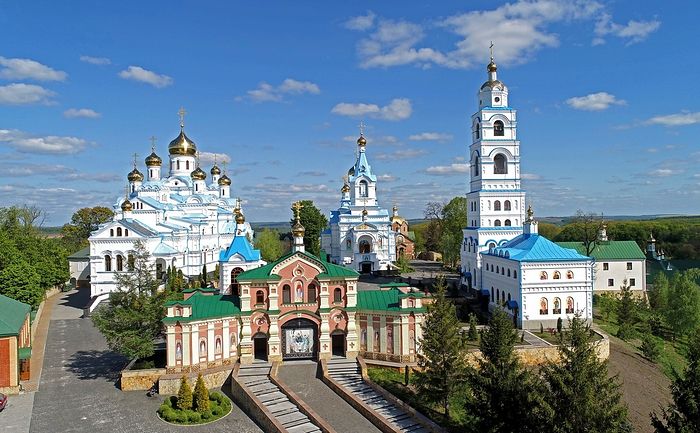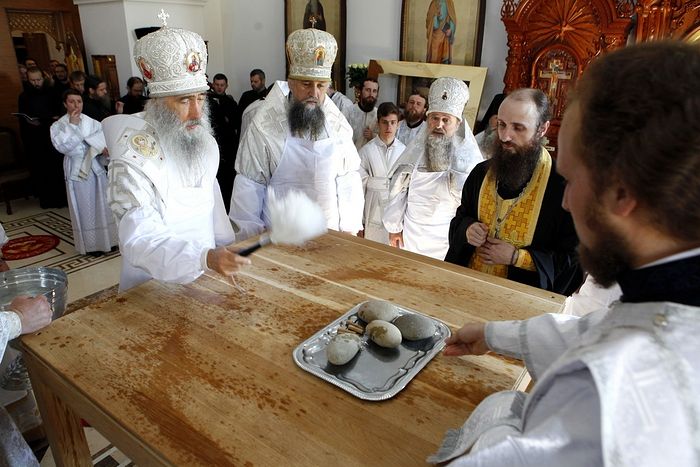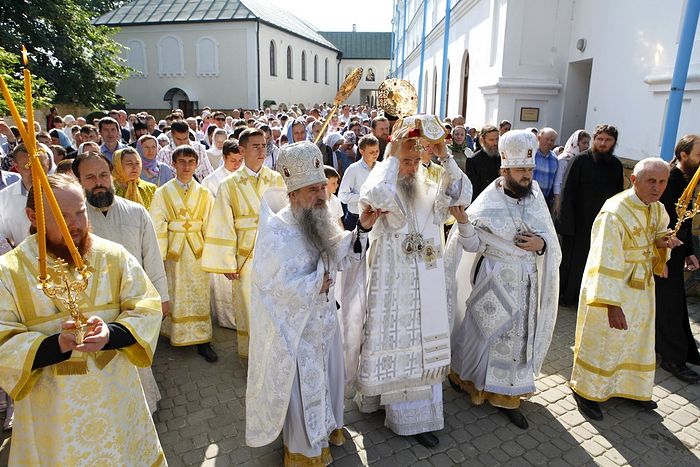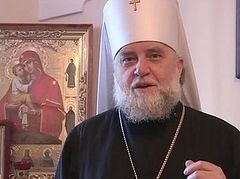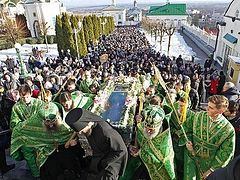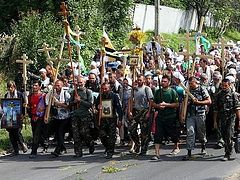Pochaev, June 12, 2019
Celebrations of the 800th anniversary of the authoritative Holy Dormition-Pochaev Lavra’s Holy Spirit Skete began on Sunday and will last through June 17.
His Eminence Metropolitan Sergei of Ternopil and Kremenets kicked off the celebration by celebrating the great rite of consecration of the skete’s Iveron Church and the Divine Liturgy, reports the Lavra’s website.
Met. Sergei was assisted by the abbot of the Pochaev Lavra His Eminence Metropolitan Vladimir of Pochaev, Pochaev Seminary rector His Grace Bishop Job of Shumsk, the abbot of the skete Archimandrite Paphnuty (Tselik), and the ordained brethren and guests of the monastery.
Following the service, Met. Vladimir thanked the other hierarchs for their participation in the festive service and the brothers of the skete for their labors in building the church. “If a road does not lead to a church, it leads nowhere,” the abbot emphasized.
Tomorrow, there will be a large procession with the miraculous Pochaev Icon of the Mother of God from the Lavra to the Holy Spirit Skete, after which a moleben of thanksgiving will be served. All present will be anointed with blessed oil and offered a festive meal.
The celebrations will end on June 17, the day of the Holy Spirit, with a hierarchical Liturgy in the Iveron Church, followed by a cross procession with the consecration of the newly-built bell tower and memorial chapel.
***
The site of the Pochaev Lavra offers a short history of the Holy Spirit Skete:
The history of the Holy Spirit Skete goes back to the old ages when St. Methodius carried on his spiritual struggle there. In late autumn 1197 he constructed a little chapel on one of the Pochaev hills. In 1219 there was laid a foundation for a monastery with a temple of the Holy Transfiguration of Our Lord Jesus Christ.
The monastery differed with its strictness of the monastic life and the abbot of the cloister was the example in prayer and labor.
The fame of the Holy cloister, caused by the miracles of the Mother of God, grew and spread; thus the monastery itself became a center for spiritual enlightenment of the Western Rus’. There was founded a theological school and a printing house later on. The walls of the chapel and the monastic temple were the chronicles of the cloister. Brothers put on there all important events of the monastic life including those disasters that God allowed to happen to the monastery. It underwent devastating attacks twice; the plague raged there three times. The third time it was so severe that only five of the monks survived.
All these disasters attacked the monastery at the end of 16th–beginning of 17th centuries. Monks were forced to move to their brothers on the neighbor western hill, where the God Mother left Her right Footprint streaming the healing water and appearing miracles from Her Icon. With the brethren’s relocation, the history of St. Methodius’s cloister got lost.
To restore the ancient monastery from desolation, in 1901 the Pochaev Lavra laid a foundation of the present Holy Spirit Skete on the place of the old cloister. Pilgrims climb the hill, overgrown by shadowy forest trees and old garden, on a filled in road, surrounded by giant trees reminding guardians, the mute witnesses of the past history of the skete. Some distance away from the road there can be seen some ponds. According to a legend, somewhere there was a source of clear water. The Gate Church of St. Onuphry the Great meets pilgrims on the top of the hill. On a spacious, flat area there stands a well-shaped stone Holy Spirit Church, architecture-resembling the ancient one. There are brethren’s cells on its left, and behind them the Church of All Saints and the house of the Skete’s vicar are located. Underneath the Holy Spirit Church there is a winter Church of St. Seraphim of Sarov.
The skete was closed during the atheistic persecution. Monks were relocated to the Lavra; the economy of the monastery was ruined and temples were desecrated. Everything valuable was taken to a local museum of atheism. For almost thirty years the atheists dominated the skete and only in 1990 Divine services were resumed as well as a spiritual and economical life of the monastery came alive.
With a great zeal of the community of the cloister the Gate Church of St. Onuphry the Great and the Church of All Saints were restored, the brethren building was built and a stone wall-fence was erected. Brothers from different corners of our homeland, who came here to save their souls, reintroduced the same old cenobitic charter. Their prayerful, spiritual and labor life is performed in the tradition of the Russian Orthodox monasticism.
Follow us on Facebook!

